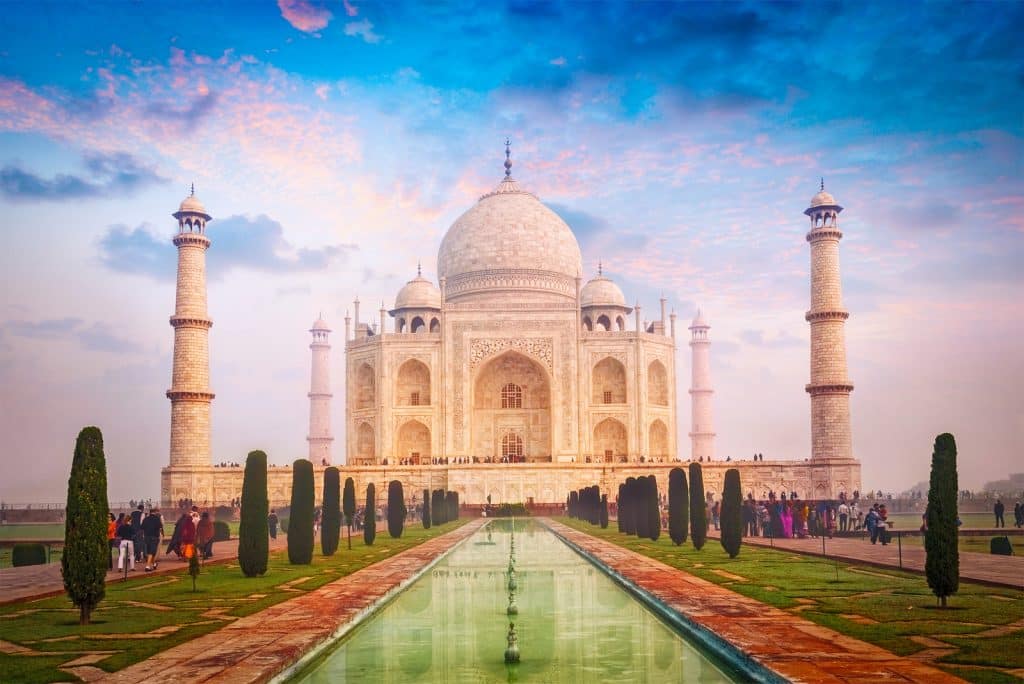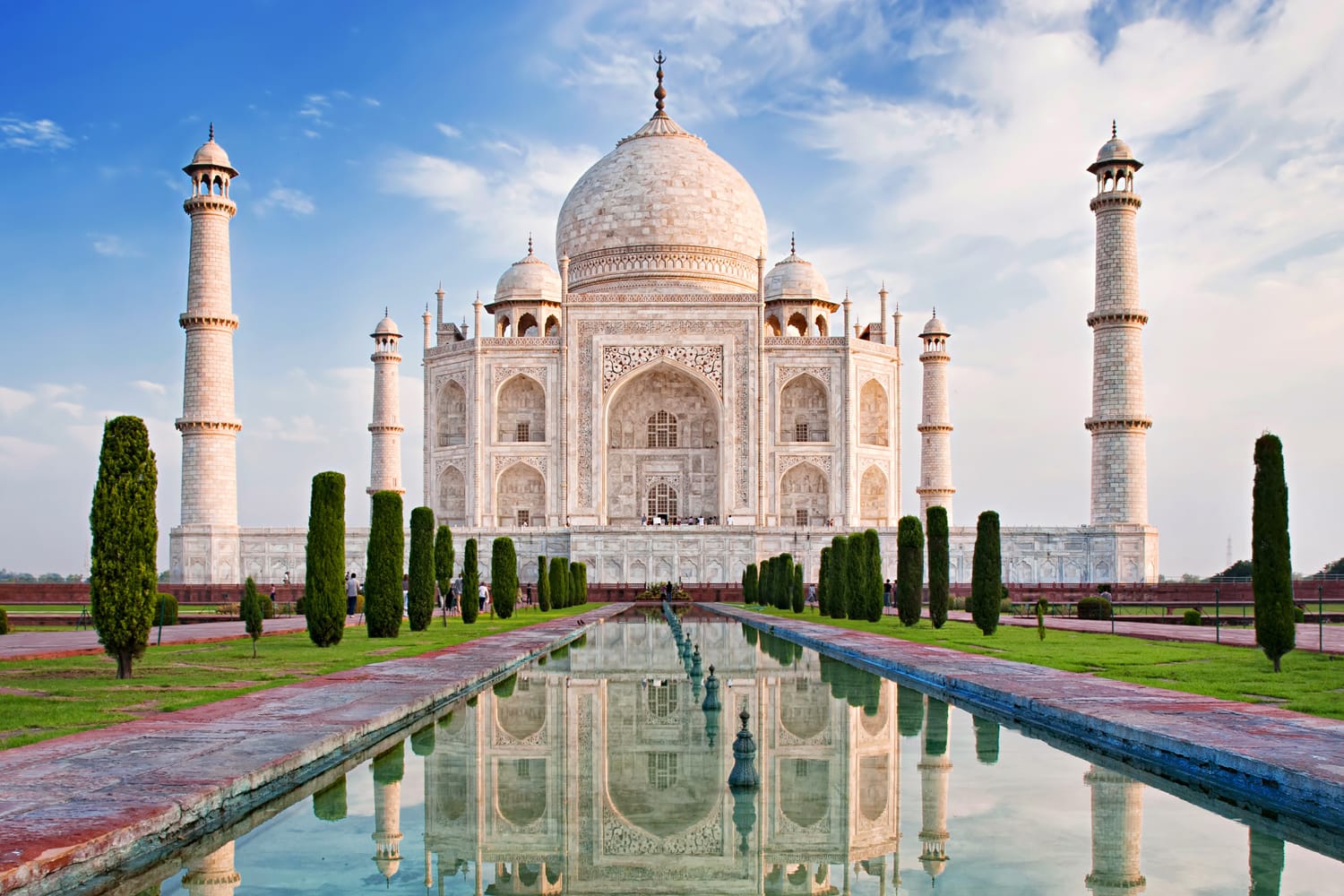Top UNESCO World Heritage Sites to Visit This Year: Dive into a world of breathtaking wonders, from ancient ruins whispering tales of empires past to pristine natural landscapes teeming with life. This year, escape the ordinary and explore sites that redefine extraordinary – a journey through history, culture, and nature’s most awe-inspiring creations. Get ready for an adventure that will leave you breathless.
This guide curates a selection of UNESCO World Heritage sites, prioritizing diverse experiences and accessibility. We’ll explore ancient marvels, stunning natural landscapes, and vibrant cultural hubs, offering practical tips and insights to make your trip unforgettable. Prepare to be amazed!
Ancient Wonders: Top UNESCO World Heritage Sites To Visit This Year

Journey back in time to explore the awe-inspiring remnants of civilizations past. These ancient wonders stand as testaments to human ingenuity, cultural achievements, and the enduring power of history. Their architectural marvels and unique features offer a glimpse into the lives and beliefs of people who lived centuries ago, shaping the world we know today.
The Colosseum, Rome
The Colosseum, an iconic symbol of Rome, is a testament to the Roman Empire’s power and engineering prowess. Built around 70-80 AD, this massive amphitheatre hosted gladiatorial contests, public spectacles, and even mock sea battles. Its elliptical shape, intricate network of corridors and chambers, and the ingenious use of materials like travertine stone and concrete, allowed for efficient crowd management and breathtaking shows.
In this topic, you find that The Ultimate Backpacking Guide: Best Budget-Friendly Destinations is very useful.
The Colosseum’s grandeur and historical significance continue to captivate millions of visitors annually. Accessibility is generally good, with ramps and elevators available in certain areas. Allow at least 2-3 hours for a thorough exploration, though you could easily spend longer if you delve into the museum exhibits.
Machu Picchu, Peru
Nestled high in the Andes Mountains of Peru, Machu Picchu is a breathtaking example of Inca architecture and ingenuity. Built in the 15th century, this “lost city” remained hidden from the outside world for centuries, only rediscovered in the early 20th century. Its remarkable stonework, perfectly fitted without mortar, showcases the Inca’s advanced understanding of engineering and astronomy.
The city’s terraces, temples, and residential areas are intricately integrated with the surrounding landscape, demonstrating a deep respect for nature. Accessibility can be challenging due to the altitude and uneven terrain. Visitors should be prepared for a significant amount of walking. A guided tour, lasting approximately 4-6 hours, is highly recommended to fully appreciate the site’s history and significance.
The Great Wall of China, Top UNESCO World Heritage Sites to Visit This Year
Stretching over thousands of kilometers, the Great Wall of China is a monumental feat of engineering and a symbol of Chinese resilience and cultural identity. Constructed over centuries, starting in the 7th century BC, different sections of the wall reflect varying architectural styles and construction techniques. The wall’s strategic placement, watchtowers, and defensive fortifications served to protect China from invaders.
Today, the Great Wall stands as a testament to the ingenuity and perseverance of generations of Chinese people. Accessibility varies depending on the section you visit; some areas are easily accessible, while others require more strenuous hikes. The recommended tour duration depends on the chosen section and your fitness level, ranging from a few hours to several days for more extensive treks.
Remember to click Cara Menjadi Lebih Terorganisir dalam Kehidupan Sehari-Hari to understand more comprehensive aspects of the Cara Menjadi Lebih Terorganisir dalam Kehidupan Sehari-Hari topic.
Natural Beauty

Mother Nature’s masterpieces are scattered across the globe, offering breathtaking landscapes that leave you speechless. These UNESCO World Heritage sites aren’t just pretty pictures; they represent irreplaceable ecosystems, geological wonders, and biodiversity hotspots. Exploring them is not just a vacation; it’s a journey into the heart of our planet’s incredible natural history. This year, consider adding these awe-inspiring locations to your travel bucket list.
Outstanding Natural Landscapes: A Comparative Look
Below is a comparison of three vastly different, yet equally stunning, UNESCO World Heritage natural sites. Each offers a unique experience, showcasing the planet’s incredible diversity.
| Site Name | Location | Unique Features | Best Time to Visit |
|---|---|---|---|
| Yellowstone National Park | Wyoming, Montana, and Idaho, USA | Geysers, hot springs, hydrothermal features, diverse wildlife (bison, elk, wolves), Grand Prismatic Spring | Summer (June-August) for optimal weather and wildlife viewing. |
| Great Barrier Reef | Queensland, Australia | Largest coral reef system in the world, incredible biodiversity (coral, fish, marine mammals), diverse ecosystems | Dry season (May-October) for best visibility and less chance of cyclones. |
| Ha Long Bay | Vietnam | Thousands of limestone karsts and isles, stunning sea caves, rich biodiversity, floating villages | October-April (avoid typhoon season). |
Yellowstone National Park: A Geothermal Wonderland
Yellowstone’s flora is surprisingly diverse, given its geothermal activity. Pines, spruces, and aspens dominate the higher elevations, while lower areas support grasslands and riparian vegetation. The fauna is equally impressive, with iconic species like bison, elk, wolves, grizzly bears, and black bears. Geologically, Yellowstone is renowned for its hydrothermal features, including geysers like Old Faithful, hot springs like the Grand Prismatic Spring, and mud pots.
These features are powered by a massive magma chamber beneath the park’s surface. Conservation efforts include strict regulations on human activity, wildlife management programs, and ongoing research to understand and protect the fragile ecosystem.
Great Barrier Reef: A Coral Kingdom
The Great Barrier Reef’s flora is dominated by an astounding variety of coral species, creating a vibrant and complex underwater landscape. The fauna is equally diverse, boasting an incredible array of fish, marine invertebrates, turtles, dugongs, and sharks. The reef’s geological formation is a result of millions of years of coral growth, creating a massive structure visible from space.
Conservation efforts focus on reducing pollution, managing tourism, and tackling the effects of climate change, such as coral bleaching.
Ha Long Bay: A Sculptural Seascape
Ha Long Bay’s flora is primarily coastal vegetation, with diverse plant life found on the limestone karsts and surrounding areas. The fauna includes various bird species, fish, and other marine life. Geologically, the bay’s thousands of limestone karsts and isles are the result of millions of years of erosion and tectonic activity, creating a stunning seascape. Conservation efforts are focused on sustainable tourism practices, pollution control, and protecting the unique biodiversity of the bay.
Comparative Analysis

UNESCO World Heritage sites showcase the incredible diversity of human and natural wonders across the globe. By comparing and contrasting sites from different categories – cultural, natural, and mixed – we can better appreciate the breadth of this global legacy and the importance of its preservation. This analysis will focus on three distinct sites, highlighting their unique characteristics and the reasons for their inclusion on the prestigious list.
The Great Barrier Reef (Australia): A Natural Masterpiece
The Great Barrier Reef, a natural World Heritage site, is the world’s largest coral reef system. Its sheer scale and biodiversity are breathtaking. Comprising over 2,900 individual reefs and 900 islands, it supports an astounding array of marine life, including countless species of coral, fish, and other invertebrates. Its inclusion on the UNESCO list stems from its outstanding universal value as a vibrant ecosystem crucial for biodiversity and scientific research.
The reef’s delicate balance is, however, increasingly threatened by climate change, highlighting the urgent need for global conservation efforts. Imagine the vibrant colours of thousands of coral polyps, the playful movements of clownfish darting in and out of anemones, and the majestic grace of whale sharks gliding through the crystal-clear waters. This vibrant underwater world is a testament to the power and beauty of nature.
Machu Picchu (Peru): A Cultural Icon
Machu Picchu, a cultural World Heritage site, is a testament to the Inca civilization’s ingenuity and architectural prowess. This remarkably preserved 15th-century city, nestled high in the Andes Mountains, is a stunning example of Inca urban planning and engineering. Its intricate stonework, terraced agriculture, and sophisticated water management systems demonstrate the advanced knowledge and skills of the Inca people.
Machu Picchu’s inclusion on the UNESCO list is due to its exceptional cultural significance and its profound contribution to our understanding of pre-Columbian societies. The site’s breathtaking setting further enhances its allure, offering a glimpse into a lost world that continues to captivate and inspire. Picture the mist-shrouded mountain peaks, the perfectly fitted stones of the ancient city, and the echoes of a rich and complex history.
Wadden Sea (Germany, Netherlands, Denmark): A Mixed Heritage
The Wadden Sea, a mixed World Heritage site, demonstrates the interconnectedness of cultural and natural heritage. This vast intertidal zone is a unique ecosystem characterized by its exceptional biodiversity and the traditional human activities that have shaped its landscape for centuries. The Wadden Sea supports a rich array of migratory birds and marine life, while its tidal flats have been used for centuries by local communities for fishing, salt extraction, and other traditional practices.
Its inscription on the UNESCO list acknowledges both its outstanding ecological value and the significant cultural traditions linked to this dynamic environment. The Wadden Sea showcases how human interaction with nature, when sustainably managed, can contribute to the preservation of both cultural and natural heritage. Visualize the vast expanse of mudflats teeming with life, the rhythmic ebb and flow of the tides, and the traditional fishing boats navigating the shallow waters – a harmonious blend of nature and human history.
So, there you have it – a curated list of incredible UNESCO World Heritage sites to ignite your wanderlust. From the whispers of ancient civilizations to the roar of untamed nature, these destinations offer a unique blend of history, culture, and breathtaking beauty. This year, make memories that will last a lifetime. Start planning your adventure now!
No responses yet